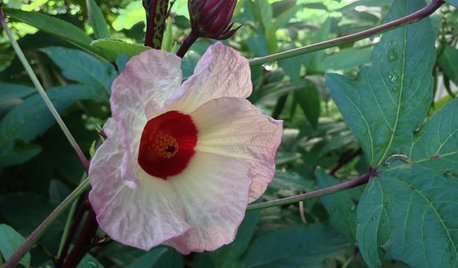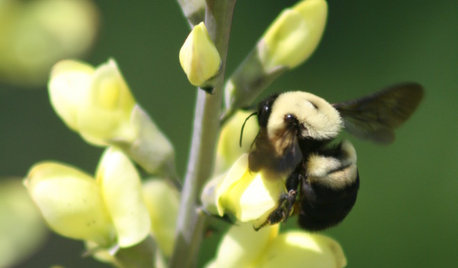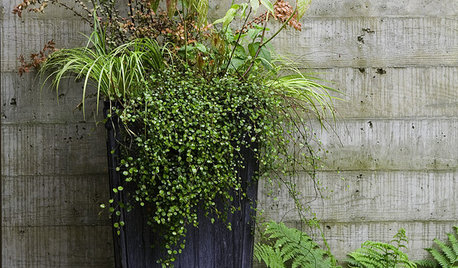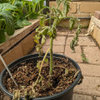My tomato plants are dying.
surfpnsbch
18 years ago
Related Stories

LIFEKitchen Traditions: Tomato Season Meets a Family Legacy
Somewhere a Sicilian great-great-grandmother is smiling at a bowl of American-made sauce
Full Story
EDIBLE GARDENSSummer Crops: How to Grow Tomatoes
Plant tomato seedlings in spring for one of the best tastes of summer, fresh from your backyard
Full Story
ARCHITECTUREHouzz Tour: Fresh Ideas in a Former Tomato Packing Shed
A formerly metal-clad structure is now a beautiful wood home designed to capture the light and preserve open space
Full Story
EDIBLE GARDENSGarden BFFs? Why Your Vegetables Are Begging for Companion Plants
Foster friendships among plants for protection from pests, pollination support and color camaraderie
Full Story
EDIBLE GARDENSGreat Design Plant: Roselle Tantalizes With Beauty and Flavor
Call it a fruit or a flower or a sweet vegetable. This hibiscus is so lovely, all that matters is calling it forth in your garden
Full Story
FALL GARDENINGWhy Fall Is the Best Time for Planting
Spring is overrated for planting. Starting plants in autumn has advantages for both garden and gardener
Full Story
HOUSEPLANTS8 Essentials for Healthy Indoor Plants
Houseplants add so much to our homes — and can thrive when grown in the right conditions. Keep these tips in mind
Full Story
GARDENING GUIDESGreat Native Plant: Baptisia
Bring beneficial bee pollinators with this drought-tolerant perennial that looks like a shrub and acts like a flower
Full Story
GARDENING GUIDESThe Secret Formula for Grouping Plants in a Pot
Designing a gorgeous container garden is easy once you know this simple rule of thumb for composition
Full Story
GARDENING GUIDESHouzz TV: Make a Worm Bin for Rich Soil and Happy Plants
A worm-powered compost bin that can fit under a sink turns food scraps into a powerful amendment for your garden. Here’s how to make one
Full Story






carolyn137
surfpnsbchOriginal Author
Related Professionals
Barrington Hills Landscape Architects & Landscape Designers · Wheeling Landscape Architects & Landscape Designers · Broadlands Landscape Contractors · Darien Landscape Contractors · Elmhurst Landscape Contractors · Fairhope Landscape Contractors · Fort Mill Landscape Contractors · Fort Mill Landscape Contractors · San Rafael Landscape Contractors · Smyrna Landscape Contractors · Vineyard Landscape Contractors · Welby Landscape Contractors · Greenfield Landscape Contractors · Casselberry Landscape Contractors · Lincoln Siding & Exteriorscarolyn137
hunter_tx
carolyn137
hunter_tx
farkee
Gimme3Steps
surfpnsbchOriginal Author
carolyn137
hunter_tx